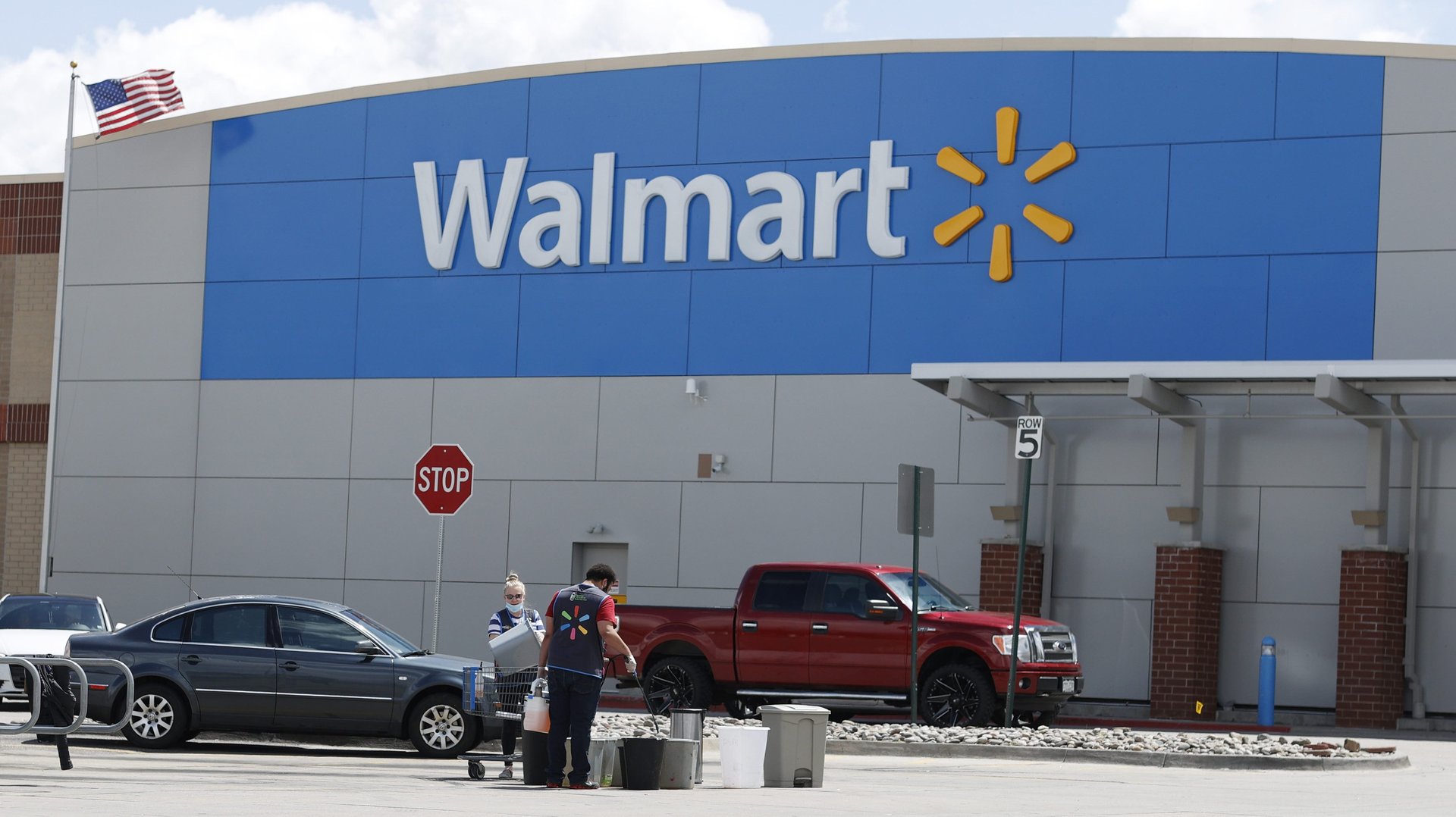Covid-19 is helping Walmart make up ground against Amazon
Walmart has almost 5,000 stores in the US, which may seem like an obvious drag on its business when much of the country is sheltering in place, but that huge network of stores is helping drive the retailer’s e-commerce amid the pandemic.


Walmart has almost 5,000 stores in the US, which may seem like an obvious drag on its business when much of the country is sheltering in place, but that huge network of stores is helping drive the retailer’s e-commerce amid the pandemic.
In its most recent quarter, the mega-retailer said its US e-commerce sales shot up 74% versus the same period last year, driven by a surge of store pickups of online grocery orders as well as delivery. Digital sales of groceries have been central to Walmart’s growing online sales, and may be the one area of e-commerce where Walmart could have an advantage over Amazon.
On a call with investors and analysts today, Walmart CEO Doug McMillon said since mid-March, when social-distancing rules went into effect around much of the US, the company has seen four times as many new customers as normal trying delivery or pickup of online orders. Many of them are becoming repeat shoppers, Walmart said.
The option for customers to buy online but pickup at a physical store—a service that’s free but requires a $30 minimum order—has been key to Walmart’s success in e-commerce, which it was slow to develop after Amazon started to take over online retail. But while Amazon, despite its best efforts, has struggled to achieve the same dominance in grocery sales that it has claimed in other parts of e-commerce, Walmart was able to use grocery sales as the foundation for its digital business. That’s in large part because of its in-store pickup option, according to Sucharita Kodali, a retail and e-commerce analyst with research firm Forrester.
“Amazon doesn’t have as broad of a pickup network, because the only stores it has are Whole Foods, which is a far smaller chain and not nearly as easy to access as the Walmart stores,” she said. Amazon recently reported more than 150 of its roughly 500 Whole Foods locations now offering in-store pickup. Walmart, meanwhile, offered pickup of online orders at roughly 3,200 of its more than 4,700 US stores as of February.
Kodali said customers who shop in a company’s stores are also more likely to buy from the company online. Walmart, the largest grocer in the US, is already the local store for a huge number of Americans. Curbside pickup lets them collect their groceries easily and with a minimum of interaction, though it does require booking a time slot, which can be difficult now due to the high demand.
Other big box retailers have similarly leveraged their stores. Target, for instance, offers a broad selection of items, and by the holidays will make same-day pickup available for fresh food and alcohol at nearly half its stores.
While Amazon’s own grocery business has boomed during the state lockdowns prompted by Covid-19, it has also stumbled in some important ways. At times it has struggled to keep up with customer demand and temporarily delayed shipment of non-essential items. It has also repeatedly sold out of the products its customers want. “That part of Amazon’s failures this quarter helped Walmart,” Kodali said. She added Walmart has struggled less with these issues, likely because it has strong relationships with all the big makers of consumers packaged goods, putting it first in line for their supplies.
Walmart aims to lean into its momentum in e-commerce. It says it’s selling a growing volume of general merchandise online, and plans to keep investing in its third-party marketplace and in sales of categories such as clothes and home goods, which have higher margins than groceries. “Our mindset is an aggressive mindset,” McMillon said on the call. “We want to drive this e-commerce business and the marketplace that goes with it as aggressively as we can.”